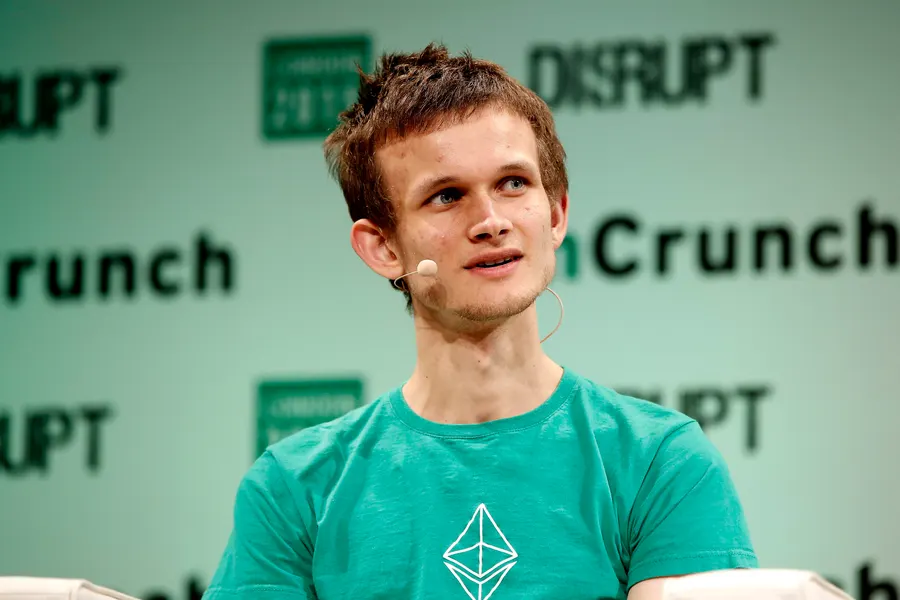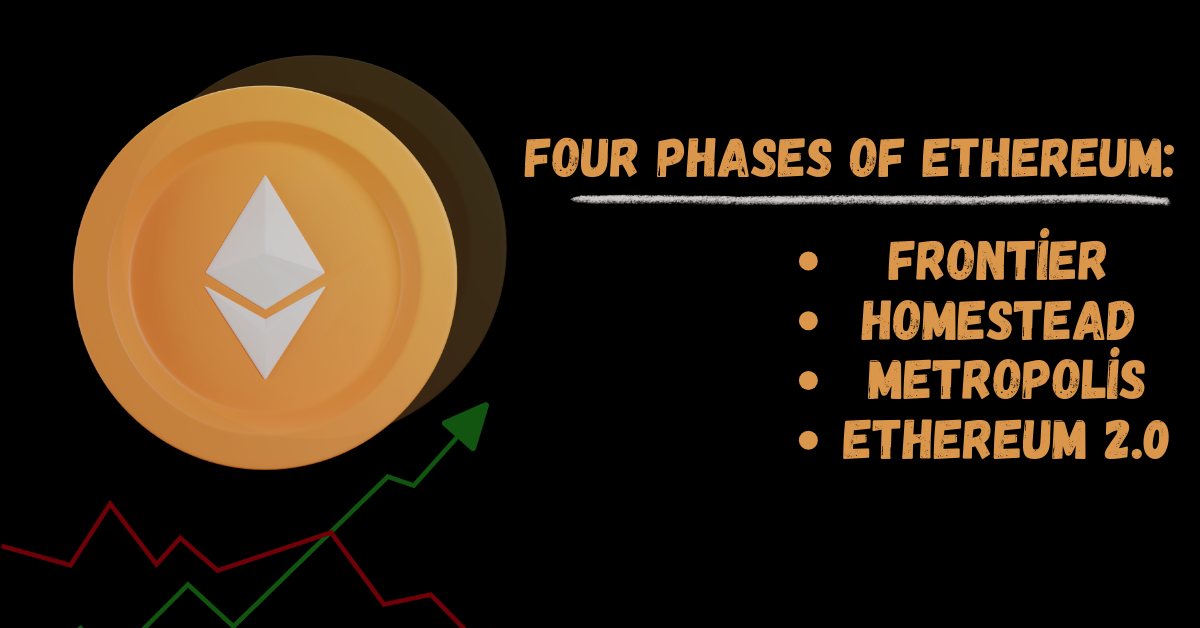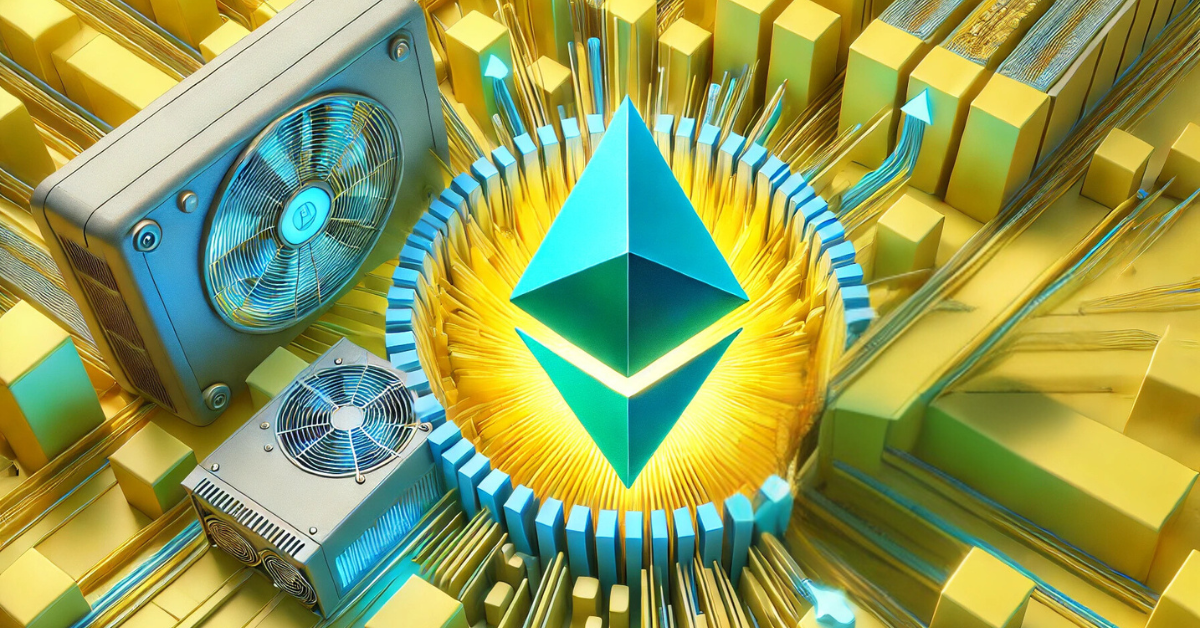Bitcoin’s limitation frustrated a 19-year-old boy. The complex scripting language restricts BTC from performing complex operations and this pissed him off. He wasn’t fond of the lack of flexibility Bitcoin offered. The boy thought these limitations were holding back blockchain’s true potential. He wanted something more. He wanted revolution. He saw the cracks in Bitcoin’s foundation and decided to build something entirely new — so, he founded ETHEREUM. This might sound strange but it’s the story of Ethereum’s birth. If that programming prodigy hasn’t gotten drained with Bitcoin’s drawback, we won’t see ETH coins making waves today.
According to Coin Ranking, Ethereum is the 2nd largest cryptocurrency with a market cap of $308.60 billion.
It’s not just a currency, it’s a backbone of distributed ledger technology. Though, Bitcoin isn’t less but Ethereum is a pure revolution in the blockchain world. It lets you create and run smart contracts. You won’t just find ETH in trading, it’s an integral element behind several decentralized finance (DeFi) applications, NFT marketplaces, and so much more, all thanks to the man, Vitalik Buterin for proposing the idea of this cryptocurrency.
Bitcoin did the crypto revolution but Vitalik’s Ethereum is the next-gen upgrade in the blockchain world. Read this article till the end to find out how this cryptocurrency came into existence.
What is Ethereum?

Before moving to the history, let’s see what Ethereum is. Ethereum is decentralized, an open-source public technology that has smart contracts integrated to trade cryptocurrencies without any third-party’s interference. It’s also often known as the “world computer” owing to the leverage of global-scale code execution it gives to the developers. Similar to Bitcoin, Ethereum also operates on a blockchain but its distributed ledger is more advanced due to smart contracts.
Ether (ETH) is its native cryptocurrency that acts as a fuel to run this ledger. Users have to pay the gas fee in ETH to execute the smart contracts, these coins later compensate the transaction validator. The conceptualization of smart contracts emerged as a significant innovation in ETH technology that helps run all the decentralized applications (DApps) autonomously. Ethereum uses a Proof-of-Work (PoW) mechanism where minors are supposed to solve cryptographic problems to add new blocks to the chain but now it’s transitioning to a Proof-of-Stake (PoS) consensus mechanism through Ethereum 2.0.
Ethereum’s Origin: The Birth of an Idea

Vitalik Buterin
Ethereum was never a sudden outcome. It goes from an idea to a white paper to a concept and then reality. All credit to Mr.Buterin, if he hadn’t been disappointed with Bitcoin, we might not have seen this technology up till yet. Vitalik was a Russian born but his family later moved to Canada for a better future. He was always an intellectual kid and loved solving the complexities of mathematics. He also had a deep understanding of computer programming from an early age which later helped him upgrade blockchain technology.
His first encounter with cryptocurrency began in 2011 when Vitalik’s father introduced him to Bitcoin. At that time, Boy Buterin was only 17 years old but the idea fascinated him a lot. He was quite surprised by the idea of decentralized currency. With this thought, Mr. Buterin started exploring more about the Bitcoin Community. Even BTC wasn’t advanced this time, it was in an early stage of development, trading around $1 to $30 per coin.
Compulsion to his intriguing nature, Vitalik joined the Bitcoin community. He co-founded a blog site for writing articles about Bitcoin’s financial landscape that gave him immense recognition. Vitalik Buterin used to deeply engage with the developers, co-founders, traders, and engineers to gain insights about BTC progress which made him dive deeper into this blockchain ecosystem.
However, with the information, Vitalik started noticing where Bitcoin was falling behind. Following are the issues he found the most disappointing:
- Complex scripting language
- Lack of flexibility & less adaptability
- Scalability factors due to its block sizes
Vitalik was convinced to provide a solution. He wanted to work on these factors and his idea was to propose a new blockchain platform that could overcome these constraints. Thus, in 2013, he proposed the idea for ETHEREUM — a solution programmed with much flexibility. The core idea was to include a smart contract to allow transactions with less complexity.
Crowdfunding Campaign
This was a turning campaign after the development of Ethereum. The presale was planned for February 2014 but it had to drop. Later, a crowdfunding campaign was decided to run from 20th July to 2nd September 2014. 60 million ether (ETH) were created to sell. In the first two weeks of funding, 2,000 ETH was equal to 1 BTC but the demand increased and 1,399 ETH was sold for 1 BTC. It was a huge success. Ethereum’s founding team sold out almost 50 million tokens which equaled 31,500 Bitcoins. They raised a total of $18 million, making it one of the largest funding campaigns.
Vitalik’s Whitepaper: Key Innovation in Blockchain Technology
After proposing the idea, Vitalik introduced a white paper to define his vision for the new blockchain platform. The white paper basically includes the key innovations in Ethereum that would overcome the issues in Bitcoin.
Smart Contracts
Vitalik called this the groundbreaking idea to be deployed. Ethereum technology would be free from any intermediaries like banks or lawyers. There’d be no thirty parties involved during operations. Smart Contracts are self-executing agreements written into code. Once the predefined conditions are met, these contracts will automatically be implemented. This enables the new concept known as “programmable blockchain technology.”
Turing-Complete Language
Ethereum introduced Solidity, a turning complete language that overtook Bitcoin’s scripting complexity. Solidity allows developers to write logic and code and create as many as applications they want. This was one of the benefits that resulted in Ethereum’s huge success in the early stages.
DAOs
This refers to decentralized autonomous organizations (DAOs). The idea was to run the Ethereum organization with the help of smart contracts instead of any traditional way. DAOs basically introduce autonomous decentralized management in Ethereum.
The Four Development Phases of Ethereum

So, we have seen above how Vitalik Buterin proposed the idea for Ethereum currency and later solidified his thoughts through the white paper that changed everything. However, this wasn’t the end of the revolution Ethereum brought in blockchain technology. The currency has gone through four major phases of development that resulted in many innovations. Let’s see each of them individually.
2015 – Frontier
The frontier version was released after a testing phase, Olympic, on 9th May 2015. Vitalik Buterin proposed this idea to find errors in Ethereum technology. The co-founders set different winning prizes for bug fixings. Each round had a main prize of 2,500 ETH and many small prizes to engage the users. Once this testnet emerged as successful, Frontier was introduced finally.
This was the earliest stage of Ethereum development, starting with the launch of Ethereum Network. The developers aimed to do a thorough live test to see how this currency works for traders. Frontier was nothing hard and fast. It was a very basic version of the Ethereum Network that had minimal functionalities including only the creation and deployment of self contracts. The gas fee introduction was necessary to prevent spam and smooth transaction operations, costing only $0.30 to $1 per ETH.
This was the first time when users had the leverage to mine ETH. These currencies were used as a gas fee to execute smart contracts and transactions. It didn’t have a well-developed user interface. The traders had to interact with Ethereum’s command-line interface (CLI) during the Frontier phase which was complex for non-technical users.
It wasn’t a stable release. The users were warned that they might encounter bugs or the network could lack somewhere. Other than that, Frontier also didn’t have many advanced features that we see today in Ethereum. This version lacked a graphical interface alongside wallet integrations.
2016 – Homestead & DAO Hack
After the frontier’s successful introduction, Vitalik Buterin and his co-founders aimed for a more stable release of Ethereum. They were eager to work on the improvements and bugs to introduce a better-upgraded version. Homestead didn’t have overall different versions, it followed the Frontier interface but with stability and some security protocols.
The enhancement included the simplified deployment of DApps. Homestead introduced solidity improvements and better functioning tools that made it easier for the developers to operate DApps in Ethereum. This version also helped form the underlying structure of decentralized autonomous organizations (DAOs).
Vitalik and the team also introduced the Ethereum Improvement Protocol (EPI-2) that helped to improve the gas cost calculation in the Frontier version, improved transaction validation, and a better content creation procedure. During the Homestead phase, the ETH price saw a huge market leap, improving from $1 to $16 by the end of 2016. The network adaption also increased significantly. Homestead was able to garner some good attention from traders worldwide.
The DAO Hack
The same year Homestead was released, DAO also gained significant attention since its launch in April 2016. It was a decentralized venture capital fund operated on Ethereum. DAO involved the contribution of Ethereum tokens (ETH) to gain voting rights in a funding proposal. Consider it as an early introduction of decentralization where decisions weren’t made by any central authority. It was one of the largest crowdfunding campaigns that became successful in raising $150 million ether in funding from 11,000 investors.
However, despite raising millions, this crowdfunding exposed Ethereum to some big security risks. On 7th June 2016, a hacker completely exploited the DAO system. He cracked the smart contract’s code that let him continuously withdraw funds to a child DAO, marking the loss of almost 3.6 million ETH which equaled $70 million at that time. Can you imagine this hack’s sensitivity? It was a legitimate turning point for the Ethereum blockchain. The hacker was smart enough to not attack the Ethereum blockchain directly but instead on the particular smart contract that secures the decentralized autonomous organization (DAO). There was a recursive bug on the system that drained off the funds before the smart contract updated the transaction balance and he rightly took the advantage.
However, in response to the exploit, the Ethereum Foundation came forward with the reverse attack. Vitalik Buterin, a vital team member, proposed a Soft Fork strategy to freeze the funds in the child DAO so the hacker wouldn’t move them. But only this strategy wasn’t enough to recover all the stolen amount. The team planned a “Hard Fork” solution that was more controversial than Soft Fork. It involved a “rollback” strategy, meaning the funds would be returned to their original investors.
This strategy was successfully integrated into almost 1,920,000 blocks and returned stolen funds to the original DAO owners. This incident wasn’t only exposure to risks associated with blockchain and smart contracts but also tested Ethereum’s resilience against security protocols to save its investors’ funds.
2017 – 2019 — Metropolis
This is the 3rd development phase Ethereum went through before its launch of Ethereum 2.0. Ethereum Foundation decided to subdivide this development version; Byzantium and Constantinople. The main idea was to introduce enhanced security measures, better scalability, and of course, offering better adaptable features to make it a robust solution for both developers and non-technical users.
BYZANTIUM
On 16th October 2017, Ethereum introduced phase-I of Metropolis i.e. Byzantium version. Following are the key features that this version brought into the Ethereum blockchain;
- Better Privacy: This was much needed in the Ethereum ecosystem. Wherever the user made a transaction, all the details were publicly available in the digital ledger exposing the system to financial threats. Thus, Byzantium introduced the zK-SNARKs protocol. It’s a cryptographic method that helps hide transaction details, enhancing security for both users and the Ethereum blockchain.
- Enhanced Smart Contracts: Vitalik Buterin’s idea was another successful integration into the Ethereum ecosystem. The Byzantium version added new opcodes and premade contracts to help the developer build more complex code logic to prevent the system from potential financial threats.
- Performance enhancements: Phase I of the Metropolis release also improved the Ethereum Virtual Machine (EVM). Added more optimization performance to EVMs for better speed and operational efficiency.
COSTANTIPOLE
After Byzantium upgrades, Metropolis phase-II was introduced on 28th February 2019 as Costantipole. Let’s see some of its prominent features;
- Less Gas Fee: During Frontier and Homestead, Ethereum had a high gas fee that basically acted as a barrier to onboarding more users. Thus with the Costantipole release, Ethereum introduced EIPs to reduce gas fees for its users, making the operations more efficient.
- Better Ethereum Virtual Machine: Constantipole also introduced better virtual machines for Ethereum to improve the flexibility factor in smart contracts.
Up till now, these subphases emerged very successfully in the development journey of the Ethereum blockchain, resulting in better upgrades, scalability, maintenance, better financial enhancements. Now, let’s move forward to what Ethereum brought next.
Serenity — The Final Phase (Ethereum 2.0)
This is the final development phase of the Ethereum blockchain that primarily revolves around transitioning its consensus mechanism from Proof-of-Work (PoW) to a more scalable and efficient Proof-of-Stake (PoS) model. Serenity (TBA) is also known as Ethereum 2.0. Vitalik Buterin has proposed big plans for this version of the Ethereum blockchain. This final journey is divided into multiple phases;
- Phase 0 is regarded as the Beacon Chain that initially introduced the PoS model but ran parallel to the existing PoW system.
- Phase 1 introduced Shard Chains that also run in parallel for better efficiency of the system.
- Phase 1.5 involves the merging of the Ethereum PoW chain with the Beacon Chain to make the transition to PoS more smooth.
- Phase 2 is the final phase of Serenity which will include all features such as full sharding, proper smart contracts execution, a better decentralized environment, and complete adoption of the Proof-of-Stake (PoS) consensus mechanism. Phase 2 of Serenity is the idea proposition of Vitalik Buterin coming to reality. He dreamed of this revolution in Ethereum blockchain’s transformation into a scalable, fully secure, and stable mining network.
The Importance of Ethereum 2.0
You might think Ethereum already has a great market reputation in the industry with a total valuation of $338.96 billion. It’s performing more than good in the mining industry with a Proof-of-Work (PoW) mechanism so why do we even need the PoS? If you’re thinking this, see these factors below to understand why Vitalik Buterin and his team are eager about the PoS transition.
- Solving Scalability Issues
Ethereum 2.0 aims to solve the scalability trilemma in blockchain. There is a long-ago debate that a system can’t have better scalability, robust security, and a proper decentralized network all at once. It’s difficult to achieve all three in one blockchain technology. However, the Serenity phase of Ethereum is designed to achieve these factors simultaneously through its PoS and Shrading methodologies.
- Improvised Ethereum Ecosystem
Ethereum 2.0 will have a great impact on the blockchain ecosystem. It’s bringing a new wave of revolution in decentralized Finance (DeFi), Non-Fungible Tokens (NFTs) marketplaces, and many other decentralized applications (DApps).
- Long-Term Goals
Vitalik Buterin’s revolution in the Ethereum blockchain includes many long-term plans for the future. He wants Ethereum to become a foundational layer of the decentralized internet to bring the whole world together. This vision is also called Web 3.0. By solving the scalability trilemma and enhancing the financial protocols, Ethereum aims to be the go-to platform in the coming decades, most likely to surpass Bitcoin’s market reputation. The transformation to PoS will mark a new era of Ethereum that will make it a leader in the blockchain space.
We have seen how Vitalik had an initial idea in 2013 that later turned into a white paper and finally, Ethereum was launched in the blockchain market. But the revolution didn’t end there. Vitalik had many plans with this currency. He proposed four development phases that were quite successful in strengthening the decentralized network of Ethereum technology and this now led to Ethereum 2.0, which we’re witnessing today. The journey brought many challenges to the Ethereum Foundation but a strong understanding of how blockchain works didn’t let the team give up on their dreams. Now, let’s see how Ethereum is progressing against Bitcoin. Let’s compare these two.
Ethereum Vs Bitcoin – Which’s best?

This comparison table will tell you why Vitalik Buterin was eager to launch the Ethereum currency against Bitcoin. These were the potential factors he worked on to improve in Ethereum blockchain.
Final Verdict
Coming to the end, we’ve seen how Vitalik Buterin has revolutionized the Ethereum blockchain. He was only a teenager when he started noticing the cracks in the Bitcoin ecosystem. Thanks to his intriguing nature, the boy didn’t overlook the faults instead he programmed an entirely new solution, Ethereum, that’s now on the podium among all the digital currencies. However, we can’t really say Ethereum is better than Bitcoin. There are still a lot of factors where Bitcoin stands the top-notch including coin circulation, market cap, and valuation. Hence, comparing these two won’t be the solution.
Nevertheless, the Ethereum Foundation aims for better and innovative upgrades and probably in the future we can expect Ethereum will be transitioning from PoS to some more robust alternative. Let’s see what else is coming ahead!
FAQs
Should I invest in Ethereum?
If you’re a short-term trader, Ethereum is most likely the best investment you can make. It’s a highly volatile asset and can result in extremely good profits if you know how to trade strategically. It uses a different mining algorithm than bitcoin which makes it compatible to mine with various GPUs. However, make sure you have a high-risk tolerance otherwise, you’ll have a hard time trading ETH. You can even earn passive income as well through a process called Staking using ETH coins. Do give it a try!
Is Ethereum better than Bitcoin?
Both currencies are on the top. Bitcoin works best as a peer-to-peer transaction system whereas Ethereum offers smart contract execution, enabling the development of applications. See the comparison table above and analyze which cryptocurrency is better.
Can I turn my Ethereum into real money?
Yes. You can cash out your ETH coins. There are different ways to convert your Ethereum into real money:
- Turn ETH into cash with a crypto card.
- Use crypto exchange for Ethereum transfer.
- Direct P2P exchange
- Withdraw Fiat from Your Bank Account
Choose what is convenient for you.
4. Who owns Ethereum?
No one owns Ethereum. It’s an open-source decentralized public blockchain with no central authority control. It’s operated by a network of miners, developers, and users. However, the Ethereum client team has the veto power to decide the changes to be made in Ethereum software.

 Educational
Educational  November 6, 2024
November 6, 2024  26 min.
26 min. 








